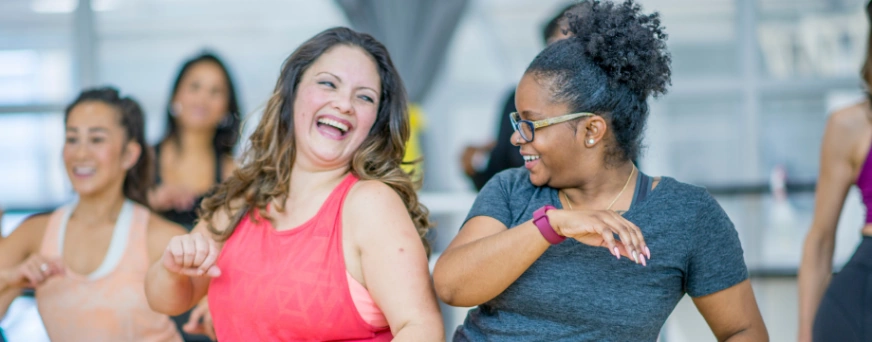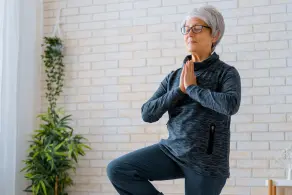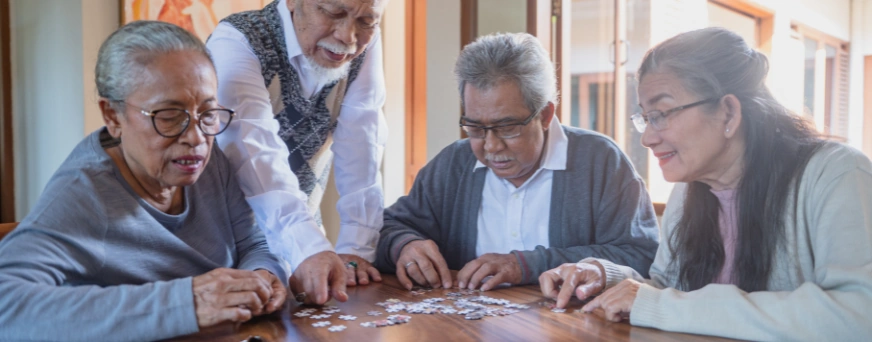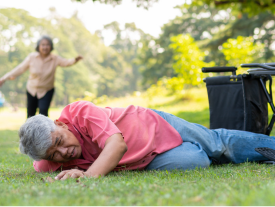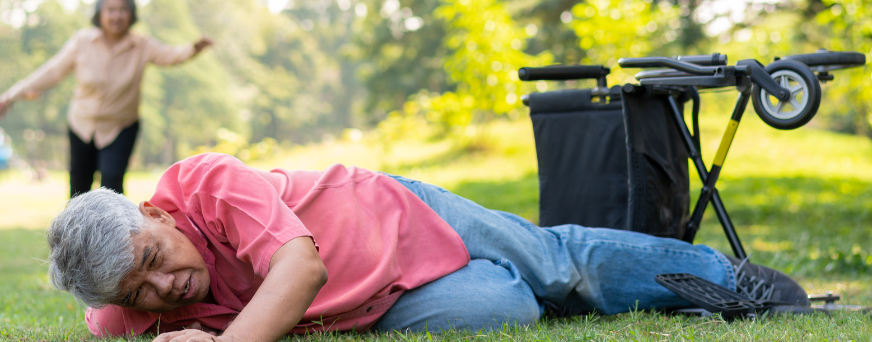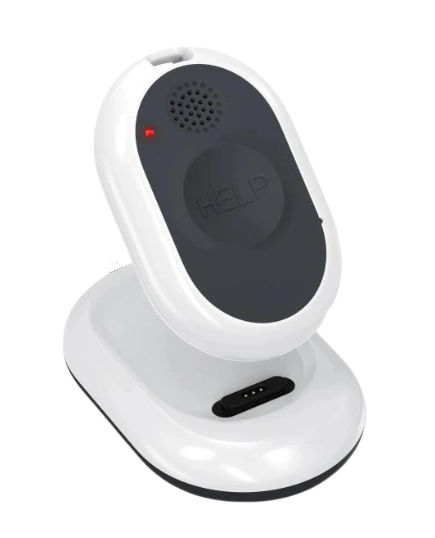Is Zumba Safe And Beneficial For Osteoporosis? What You Need To Know
Staying active plays a major role in managing osteoporosis, especially for seniors. However, with concerns about bone health and fracture risk, not every exercise feels like a safe choice. Many seniors in the USA ask the same question: Is Zumba good for osteoporosis?
Zumba blends upbeat music with fun, low-impact movements, making it an appealing fitness option. But is it right for people living with weakened bones?
Discover whether Zumba is safe and beneficial for seniors with osteoporosis and learn how it supports bone strength, what precautions to take, and how to incorporate it into a healthy routine designed for your needs.
What Is Osteoporosis In Seniors?
Osteoporosis causes bones to become thin and brittle, making them more likely to fracture. It’s a common condition among seniors in the United States, especially among women over the age of 65. As bone density decreases, everyday activities such as bending, lifting, or even sneezing can pose serious risks.
This condition often develops silently, with no obvious symptoms until a break or fracture occurs. Risk factors include:
-
Age and gender: Most common in adults over 65, especially postmenopausal women
-
Family history: Genetics can play a role in bone density loss
-
Low calcium or vitamin D intake: Nutrient deficiencies weaken bones over time
-
Sedentary lifestyle: Lack of physical activity contributes to faster bone loss
-
Certain health conditions: Thyroid issues or autoimmune diseases like rheumatoid arthritis
-
Long-term medication use: Especially corticosteroids or certain cancer treatments
Managing osteoporosis involves preserving bone health, preventing falls, and staying active. Safe, weight-bearing exercises help strengthen bones, improve mobility, and maintain independence in daily life.
What Are The Basics Of Zumba?

Zumba is a dance-based fitness program that combines Latin-inspired music with choreographed movements. In the 1990s, Colombian dancer Alberto “Beto” Pérez created the program by accident when he forgot aerobics music and improvised the class using Latin music. It was a hit! Since then, Zumba has grown into one of the most popular group workout classes worldwide, especially among older adults seeking fun, social ways to stay active.
Each class typically features:
-
Rhythmic movements to salsa, merengue, and reggaeton beats
-
Alternating periods of low- and moderate-intensity cardio
-
Repetitive steps that are easy to follow regardless of skill level
Many instructors offer specialized Zumba Gold classes designed for older adults. These sessions reduce the intensity and impact of traditional Zumba, making it easier on the joints while still providing cardiovascular benefits.
For seniors looking to improve coordination, stay mobile, and enjoy a sense of community, Zumba offers a structured and enjoyable fitness experience.
Is Zumba Safe For Seniors With Osteoporosis?
Zumba can be a safe and enjoyable form of exercise for many seniors with osteoporosis, but it depends on the individual’s condition, fitness level, and any history of fractures. Since osteoporosis weakens bones and increases the risk of injury, it’s critical to consider modifications and professional guidance.
Always speak with your healthcare provider before starting Zumba or any new fitness routine. They can help assess your risk and advise on whether a traditional class, modified version, or one-on-one instruction is best.
Benefits Of Zumba For Seniors With Osteoporosis
When adapted correctly, Zumba can support better bone health and overall well-being. Benefits include:
-
Improved balance and coordination, which lowers fall risk
-
Increased cardiovascular fitness, supporting heart and lung health
-
Weight-bearing movement, which can help maintain bone density
-
Enhanced mood and mental health, thanks to the fun, social atmosphere
Modifications And Precautions
To stay safe while doing Zumba with osteoporosis, seniors should:
-
Choose low-impact classes designed for beginners or older adults
-
Avoid high-impact moves like jumps or twists that stress the spine and hips
-
Wear supportive shoes and use slip-resistant flooring
-
Start slowly and build stamina over time
-
Stay hydrated and rest when needed
Zumba can be a safe part of an osteoporosis-friendly routine with the right adjustments and guidance.
Comparing Zumba With Other Exercises For Osteoporosis

Zumba is just one of several exercise options for seniors with osteoporosis. While it offers cardiovascular and weight-bearing benefits, other low-impact activities may suit different needs or preferences.
Walking is simple and accessible, supporting bone strength without added strain. Tai chi improves balance and coordination, reducing the risk of falls. Strength training builds muscle mass, which protects bones and enhances stability.
What makes Zumba unique is its combination of movement, music, and social connection. Compared to solitary or repetitive routines, Zumba offers:
-
A lively, motivating atmosphere
-
Rhythmic, full-body movements
-
Opportunities for social engagement
-
Adaptable routines for various fitness levels
Seniors can mix Zumba with walking, tai chi, or strength training to build a well-rounded routine that supports bone health and overall wellness.
Additional Considerations For Seniors Engaging In Zumba
Staying safe and comfortable during Zumba starts with the right preparation. A few simple choices can help seniors protect their joints, prevent falls, and enjoy the experience more fully.
Wear supportive athletic shoes with good traction to reduce the risk of slipping. Breathable, flexible clothing allows for easy movement and helps regulate temperature. Accessories like cushioned insoles or compression socks may also enhance comfort and stability during class. Hydration and pacing are also key.
Seniors should:
-
Drink water before, during, and after class
-
Avoid pushing through pain or fatigue
-
Take breaks as needed
-
Pay attention to how their body feels during movement
Choosing classes designed for older adults or beginners adds an extra layer of support. These classes often feature modified routines and instructors trained to accommodate mobility limitations. Listening to your body and adjusting as needed helps keep Zumba fun, safe, and sustainable for seniors managing osteoporosis.
Conclusion
When approached thoughtfully, Zumba can be a safe, enjoyable way for seniors with osteoporosis to stay active. Its rhythmic, weight-bearing movements support bone health, balance, and cardiovascular endurance. With proper modifications, the right class format, and guidance from a healthcare provider, Zumba becomes more than just exercise—it’s a path to stronger bones and greater confidence.
Seniors looking to stay mobile, boost their mood, and maintain independence may find Zumba a valuable part of their wellness routine.

